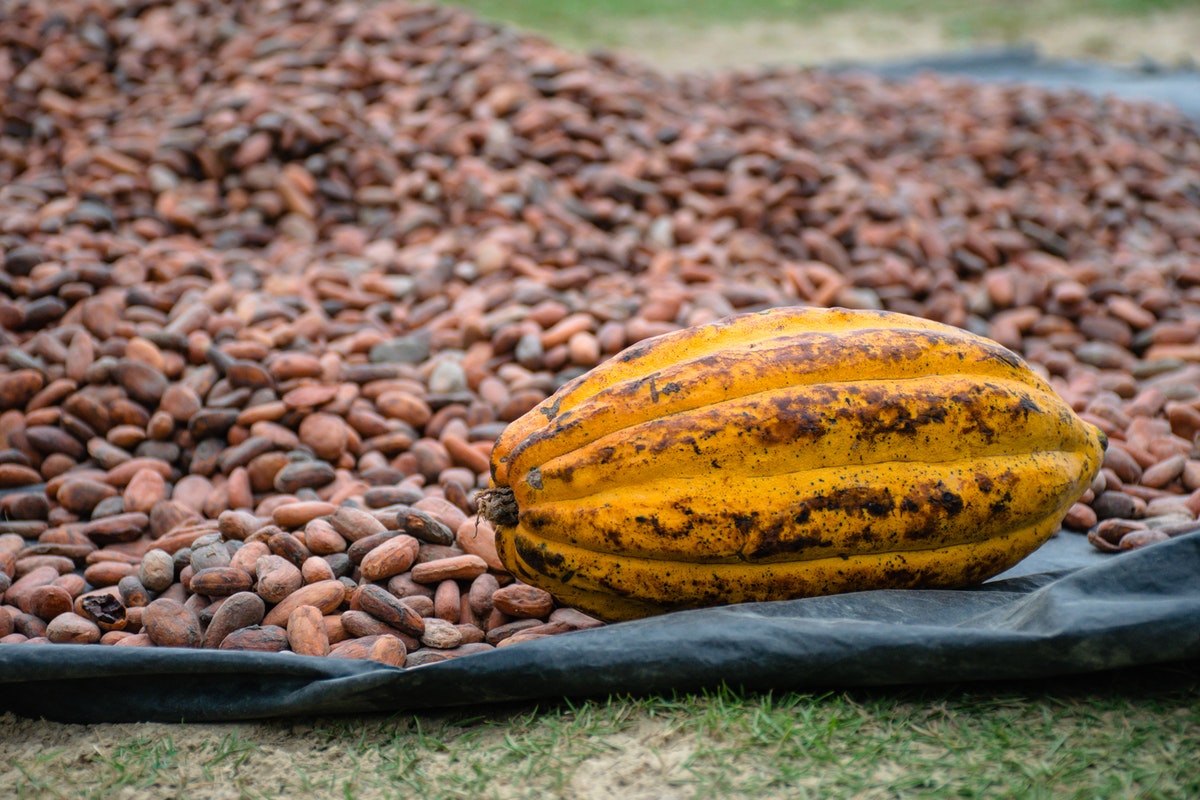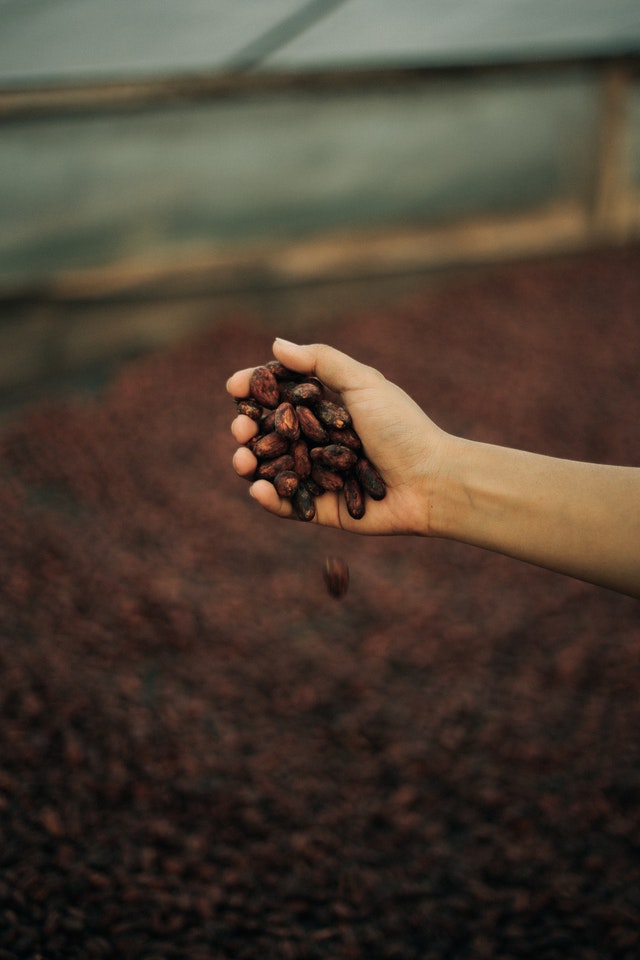
Sweets are made with cacao beans, derived from a tree called the cacao, or formally, Theobroma cacao. The cacao tree has been grown for thousands of years in Mexico, and Central and South America, where it has been valued so much that some indigenous peoples once used its seeds, or beans, as money. Yet in Samoa, many families are growing cacao trees and processing them for their consumption.
Today, cocoa is grown in Samoa mostly on small-scale family farms, where farmers cultivate cacao trees along with other tropical crops as part of their subsistence agriculture. Officially, cacao arrived in Samoa in 1883, when Germans brought plants from Ceylon for cultivation. While we cannot be sure exactly at what time cacao was introduced to the islands, Germany’s annexation of Samoa in 1900 brought the old, familiar colonial push for profits, and increased the trade-in of imported cacao, which grows exceptionally well in the region of tropical weather. It is only today that Samoan cacao is beginning to be recognized as a quality product, a commodity sought after worldwide.
Despite growing interest and overseas demand for Samoan cacao, growing beans remain a humble family business in Samoa. I also heard the farmers of Samoan cacao are struggling to keep up with demand for their products from huge chocolate companies around the world. Only one country very rarely among countries worldwide grows cacao and consumes cacao.
Cacao beans are slightly bitter, are naturally sugar-free, and are high in nutrients. All chocolate is made with the cacao (cocoa) bean, cacao beans in their natural, unprocessed, undisturbed state are packed with nutrients and healthy.
The bitterness of cacao beans is reduced, and the rich flavour of chocolate begins to emerge. The beans are dried out following fermentation, and in this drying process, the brown colour is developed, and additional flavour development occurs.

After picking, the beans are subjected to a process of slow fermentation to eliminate the bitterness and astringency inherent in them. After harvest, cacao beans are placed in large wooden boxes, stacked atop banana leaves, and left to ferment for a few days. The beans are processed into cacao nibs and packed hermetically, to make sure that they arrive at you in perfect condition.
Cacao nibs are peeled, crushed beans — like an unsweetened chocolate chip. Cacao powder is just a bean from a cacao tree, which has had its fat (cacao butter) removed by cold pressing. After the beans ripen, which takes between 5 to 6 months, they are removed from the tree and gently slit with a machete, with the cacao beans extracted.
The Aztecs believed that cacao was divinely-origin, and both they and the Mayans used roasted beans in a well-known drink, the Chocolate, along with vanilla and other flavours. This original cacao is thought to have been the Criollo variety, which is still found amongst the traditional plantations.
For example, Coco Samoa is a traditional beverage made with 100% cacao, which is roasted and ground to a paste. When visiting traditional families in Samoa, they will often offer you a cup of Koko. Many beloved Samoan dishes today vary from Koko alaysia, or cacao rice, to kopai, cacao dumplings, and Koko esi, cacao-papaya soup.
At Living Koko, they are creating guilt-free, small-batch indulgences with their custom-made cacao products, made with rich cacao beans sourced from Samoan islands. Living Koko sells farmers’ beans direct to producers, and makes cacao products, from chocolate bars to face masks, selling finished products to coffee shops, caterers, restaurants, and nail salons. Their main motivation is finding an overseas market for cacao grown on small-scale village plantations throughout Samoa, as well as helping grow the villages’ economies. Live Koko aims to provide this support by making sure that small-spread farmers get a regular, fair income from the cacao they can grow on their farms, providing a foundation on which farmers can grow their businesses.
We believe the privilege of doing business means investing aggressively in families’ livelihoods while planting, harvesting, and selling cacao. Live Koko has spent many months travelling throughout Samoa, meeting with community leaders and farmers, and understanding better and more respectful ways of supporting communities. This was at the first lockdown of Covid, in Melbourne, and ABC International Development put some light on our small businesses, on the work that we are doing in Pacific communities, both here in Melbourne, and on Samoan Island, at times of trouble, where we are all looking for a bit more connections and alofa. In Samoa, it is all about relationships, and Living Coco wanted to make sure that we had strong, authentic relationships before the export of the cacao.
By the way, if you are interested in learning more about the Koko (chocolate) industry, I have also found this other video in which a man named Andy travelled to Mexico — the old home country of cacao trees — and shared what he learned with local cacao farmers. The really sweet film 3 wise cousins include a lovely sequence of Native Samoan children picking up cacao pods and helping their grandmothers make Koko out of the pods Native Samoan children make cacao pods out of their own. Ola Pacificas business practices were driven by the wish of Ola Pacificas founder, Nia Belcher, and her husband, Phil Belcher, to support families and villages in Savaii Island — the birthplace of Nias mother — and neighbouring Upolu, sourcing quality Samoan cacao beans from the local plantations. The farmers who produce cacao beans for Ola Pacifica are a long way removed from the political-tinged platforms of business operations.









